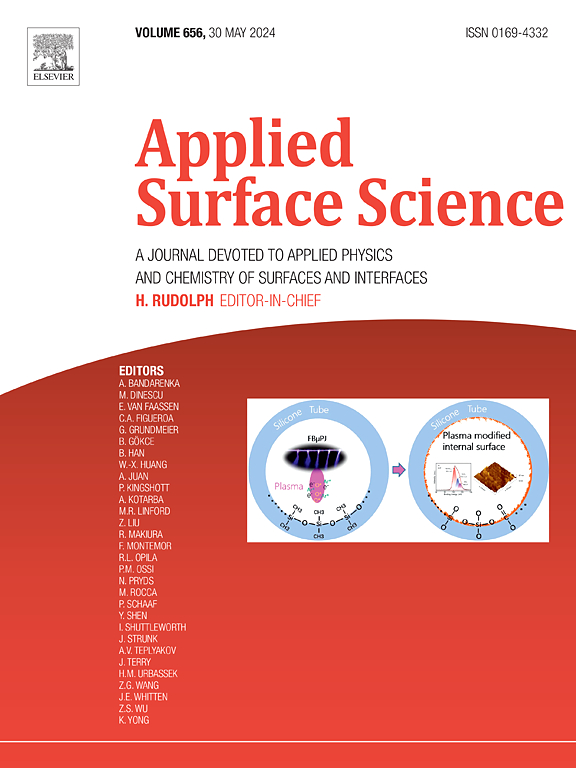Biosynthesis of enhanced magnetic iron Oxide@ZnO nanocomposites with incorporated Ni species for the photodegradation of dyes
IF 6.9
2区 材料科学
Q2 CHEMISTRY, PHYSICAL
引用次数: 0
Abstract
The textile industry generates approximately 700 million kilograms of dyes annually, with about 10–20 % improperly discharged into the environment, poing significant risks to aquatic ecosystems and human health. This study reports the sustainable biosynthesis of FeOx@ZnO (FZ) and FeOx@ZnO-Ni (FZNi) nanocomposites using hydroethanolic extract and infusion from Magonia pubescens A. St. Hil. Characterization techniques confirmed their crystalline structure, composition, morphology and optical properties. Photodegradation tests using rhodamine B under visible light for 300 min showed superior efficiency for FZNi (96.8 %) compared to FZ (87.5 %), attributed to enhanced light absorption from Ni doping, which lowers the band gap. Density Functional Theory (DFT) calculations analyzed ZnO(100) and ZnO(101) surfaces. The optimized ZnO(100) surface exhibited a decrease in the c lattice parameter from 5.209 Å to 4.935 Å, while ZnO(1 0 1) displayed triclinic characteristics with a lattice parameter set of a = 3.23 Å, b = 3.07 Å, and c = 6.02 Å. Partial density of states (PDOS) analysis revealed a higher band gap of 1.93 eV for ZnO(1 0 1), than the experimental value of 3.46 eV. Substitutional doping with Ni in ZnO(1 0 1) significantly reduced the band gap energies to 1.08 eV and 1.41 eV, respectively, while introducing new defect states near the valence band due to d-orbital contributions from the doped cations. These theoretical findings, aligned with experimental results, demonstrate that partial Ni doping and the presence of Ni nanoparticles on the material’s surface effectively narrow the band gap in ZnO(1 0 1). Ni-ZnO(1 0 1) exhibits the most significant reduction, enhancing its photodegradation performance.


磁性铁纳米复合材料的生物合成及其对染料的光降解作用
纺织工业每年产生约7亿公斤染料,其中约10 - 20% %不正确地排放到环境中,对水生生态系统和人类健康构成重大风险。本研究报道了用毛臭Magonia pubescens A. . Hil的氢乙醇提取物和灌注法制备FeOx@ZnO (FZ)和FeOx@ZnO-Ni (FZNi)纳米复合材料。表征技术证实了它们的晶体结构、组成、形貌和光学性质。在可见光下使用罗丹明B进行300 min的光降解测试表明,与FZ(87.5 %)相比,FZNi(96.8 %)的效率更高,这归因于Ni掺杂增强了光吸收,从而降低了带隙。密度泛函理论(DFT)计算分析了ZnO(100)和ZnO(101)表面。优化的氧化锌(100)表面表现出减少c晶格参数从5.209到4.935,而氧化锌(1 0 1)显示三斜晶系的特征的晶格参数集 = 3.23 = 3.07 a, b和c = 6.02 。偏态密度(PDOS)分析表明ZnO(1 0 1)的带隙为1.93 eV,高于实验值3.46 eV。Ni在ZnO(1 0 1)中的取代掺杂显著降低了带隙能,分别为1.08 eV和1.41 eV,同时由于掺杂阳离子的d轨道贡献,在价带附近引入了新的缺陷态。这些理论发现与实验结果一致,表明部分Ni掺杂和Ni纳米颗粒在材料表面的存在有效地缩小了ZnO的带隙(1 0 1)。Ni-ZnO(1 0 1)表现出最显著的减少,增强了其光降解性能。
本文章由计算机程序翻译,如有差异,请以英文原文为准。
求助全文
约1分钟内获得全文
求助全文
来源期刊

Applied Surface Science
工程技术-材料科学:膜
CiteScore
12.50
自引率
7.50%
发文量
3393
审稿时长
67 days
期刊介绍:
Applied Surface Science covers topics contributing to a better understanding of surfaces, interfaces, nanostructures and their applications. The journal is concerned with scientific research on the atomic and molecular level of material properties determined with specific surface analytical techniques and/or computational methods, as well as the processing of such structures.
 求助内容:
求助内容: 应助结果提醒方式:
应助结果提醒方式:


